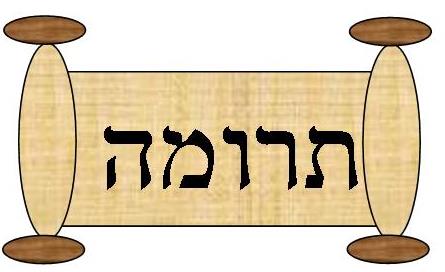The construction of the sanctuary – or the Mishkan – is related to us in this week’s parshah, along with all the elements that were to be placed within it. We read of the very famous statement of God to Moses: “Make me a sanctuary for me to dwell in” (Exodus 25:8). Abravanel prefaces his commentary to the Sidra with many questions, and among them the following: Why did the Almighty command us regarding the construction of the tabernacle saying ‘I shall dwell among them’ as if He were a circumscribed corporeal being limited in space, when this is the opposite of the truth? For He is nor corporeal, He is not a material force, and He has no relation to place. Of God it is said in Isaiah 66:1: “The heaven is My throne and the earth My footstool – where is the house that you may build for Me? And where is the place of my rest?” Solomon, likewise, said the following, regarding the building of the Temple: behold, the heaven and the heaven of heavens cannot contain thee; how much less this house that I have built?” (I Kings 8:27). These are evidently statements that contradict each other. Abravanel’s response to his question (as recorded in Nechama Leibowitz ‘Studies in Exodus’) is that the Divine intention behind the construction of the tabernacle was to combat the idea that God had forsaken the earth, and that his throne was in heaven and remote from humankind. To disabuse them of this erroneous belief, He commanded them to make a tabernacle, as if to imply that He dwelt in their midst – which they should believe that God lived in their midst and His Providence was ever with them. This is the meaning of: “And I shall dwell amidst the children of Israel”, “who dwelleth with them in their defilement.” It is all a parable and allegory representing the idea of the immanence of His Providence and Presence. He commanded the installation of the laver and its base as if to warn them to “cleanse…remove the evil of your deeds”, the altar of the burnt offering, on which to burn your corporeal desires and evil impulses. The Temple contained the table, candlestick, and the altar of incense. These vessels symbolized the ministering to the King of the Universe, not that He – heaven forbid – needs any of these things. Their purpose was to implant in their souls that God walked in the midst of their camp.
The Torah tells us that the lid of the ark should be made of pure gold, and that out of the lid, those who construct it should fashion the cherubs. The Alskekh explains that as we know, the material blessings in this world comprise three elements, i.e. children (physical continuity), life and livelihood. Concerning the acquisition of the life aspect, the ark has already become a symbol to him who desires life, who devotes himself to the Torah, to secure life both in this world and in the world to come. The Torah now suggests what man should do in order to have children. After having studied Torah, his next task in life is to marry and raise a family. This family too is linked to one’s Torah study. The figures of the male and female cherub on the lid of the ark represented the union of man and wife on the basis of Torah. As the Talmud in Yevamot 63 states, he who marries, his sins are forgiven. Such a union is to be pure from sinful considerations as the purity of the gold, the kapporet – lid – is made of. The letters yud and heh in the words ish and ishah respectively, are represented symbolically by the length and width measurements of the kapporet when measured in terms of handbreadths, instead of cubits as mentioned in the Torah. This is a reminder that God must be part of such a union in order for such a union not to go up in aysh or flames –passion burning itself out, and leaving the marriage devoid of meaning. The intent when entering into the bonds of marriage is that one’s relationship becomes a spiritual one if the couple wish to ensure that their children will be like the cherubs and reflect the innocence and purity of their parents. When all these factors are present, the children’s faces will face the lid, and the parents need not fear that they will lose their children during their lifetime. On an interesting note, subsequent to placing the tablets into the ark, God will come to Israel. Shemot Rabbah illustrates the point: As long as a girl was merely betrothed, her fiancé would visit her daily in her father’s home. Once they had become married, the bride’s father would visit his daughter in the home of his son-in-law. Similarly here – Once the tablets were inside the Holy Ark, God would manifest himself among the Jewish People and Moses would no longer have to climb the mountain.
Prepared by Devorah Abenhaim







